MASS Meeting Notes for June 17, 2016
This was our 47th meeting. Phil, Silvio, Dave, Dean and I were in attendance.
Silvio and I related our presence at the Cernan Space Center relaunch on May 24, 2016. There were quite a few dignitaries present, including a couple of mayors and the Triton College President. The last SkyWatch had good news, Dan Troiani has been rehired after his retirement and now will be compensated for his production of the SkyWatch program.
Silvio showed some pictures from his trip to the Palomar Observatory on his recent visit to California. He was very disappointed with the lack information given to visitors. Even the gift shop was closed.
I told the group about my recent trip to the Adler Planetarium. Carol and I survived the 3 mile stroll from the Olgilvie train station to the planetarium. We had a great day and the scenic vistas of the lake and the sailboats were fantastic. We saw the new show, “Planet Nine”, which was great. It’s nice to be able to hear directly from one of the
researchers, Mike Brown, and see the up-to-date data presented in such a visually rich manner. The object, Planet Nine, is implied from the orbital characteristics of numerous Kuiper Belt objects and is estimated to be 15 times more distant than Pluto (600 AU) and to have a mass 10 times that of Earth.
I also gave a quick synopsis of the book “Dark Matter and the Dinosaurs” by Lisa Randall. She has an interesting theory that there is a second form of dark matter (DM) that is self-interacting. This enables the DM to form atoms and give off dark light and most importantly condense into a very narrow (~20 light year wide) disk within the Milky Way (MW). The Sun as it revolves around the MW, bobs up and down like one of the horses on a merry-go-round. Her theory is as the Sun passes through this plane of DM, the comets in the Oort Cloud are disturbed and sent crashing into the inner solar system causing mass extinctions. The dinosaur extinction 66 million years ago would have been one of these events. By analyzing crater ages and extinction events she proposes that the Sun bobs up and down in a 32 million year cycle and our last pass though was 2 million years ago.
We also did a preliminary report on the upcoming entry of the Juno probe into orbit around Jupiter on the evening of July 4th. The 35 minute burn is expected to occur from 10:18 to 10:53 PM Chicago time. At the time Juno will have set the record for the fastest man-made object, 160,000 mph, as it gets pulled into Jupiter’s enormous gravitational field. NASA has a great video describing the mission. Juno also has to be careful of Jupiter’s enormous radiation belts also. Over its 20 month, 37 orbit mission, it is estimated that Juno will receive 20 million rads of exposure as it skims only 3100 miles above the clouds at the low point of its elliptical orbit. For comparison the typical person on the Earth receives about .3 rad/year. To protect its electronics Juno has a 500 lb titanium vault will .3 inch thick walls. Juno will give us the first pictures of the poles of Jupiter and will probe beneath the clouds with multi-spectral scans. By studying the gravitational field it will try to determine if Jupiter has a rocky core.
Our last topic before we started current events was a short TED talk titled “How Humans Could Evolve to Survive in Space”. Interesting talk but a little scary when they start talking about doing gene-engineering on humans.
For current events we covered the following topics:
- Cool movie of flare & sunspot – video from new 1.6m solar telescope with adaptive optics (highest resolution ever, 20 km/pixel, of the Sun). The movie covers 2hr 20min of actual time. The research paper talks about a flare ribbon propagating across sunspot, coronal rain of condensing plasma streaming down along loops and chromosphere’s response to impact of coronal rain showing brightening at footpoints of falling plasma.
- With new technique 1284 exoplanets found in Kepler data –more than doubles the number of exoplanets that have been found so far. Data are from when in 2009-2013 Kepler stared at its original 150,000 stars. The new automatic technique was applied to 4700 exoplanet candidates and used a 99% accuracy cut-off critereon. Nine of the new exoplanets are earth sized and in the habitable zone which bring Kepler’s total of these to 21. But the stars are too far to learn much more from Earth-based telescopes. The technique used previous exoplanet observations and known exoplanet distribution in Milky Way. Another 1327 planets almost certain but not meet the 99% rule. Based on Kepler data our galaxy probably has more than 10 billion rocky planets in the habitable zones of their stars.
- Starliner first crewed flight slips to 2018 from December 2017 – The slip is due to Starliner’s mass and some aeroacoustic issues related to integration with Atlas-V plus additional work due to NASA software updates for the spacecraft. SpaceX at the moment is still sticking to their 2017 timetable for now. There is a short video of mating the 2 parts of the Starliner and astronauts working with simulators. Starliner can handle 7 astronauts but NASA missions plan for 4 people. Chris Ferguson of Boeing expects crews of 5. After getting information on this structural test article they will used it to build actual test flight articles. Popular Science feels SpaceX will be the first to put astronauts into orbit. On 5/25/16 SpaceX announced that its uncrewed man-rated Dragon docking to ISS will slip from 4th quarter 2016 to May 2017. Probably their 1st manned mission with Dragon will probably slip 5 months from Apr 2017 to Sep 2017 which is still 5 months before Boeing 1st manned flight with Starliner. Our MASS Prize contest for when US astronauts would launch on US vehicles to the ISS has only 2 people left in the running. Phil guessed 6/16 and Judy 8/16. I think both of those dates have two chances of being correct, slim and none. I guess we are an optimistic group but remember we were making these gueses in July 2011. On 5/18/16 Charles Bolden said that in 1.5 years (Nov 2018) astronauts will be launching to ISS from US soil.
- Unnamed Dwarf Planet could be 3rd largest – 2007 OR10 might be 955 mi in diameter just smaller than Pluto (1475 mi) and Eris (1445 mi) but larger than Haumea (1195 x 615 mi) and Makemake ( 890 mi). The size estimate used Kepler K2 rotation data plus infrared info from Herschel satellite. The largest asteroid, Ceres, is 570 mi.
- 2018 is getting to be quite a year – It includes the first crewed launch of Starliner capsule from Boeing, the launch and landing of the Insight Mars mission which will drill 10-16 ft deep into surface, in October the launch of the James Webb Space Telescope (JWST), the in-flight test of the new Orion capsule abort system on a Peacekeeper missle, the first launch by SpaceX from Boca Chica launch site in Texas, in July the launch of the Solar Probe Plus mission to study the sun by flying thru its corona which is only 3.9 million miles above the Sun’s surface and is 4x closer than anything has ever approached the Sun, the Hayabusa 2 probe arrives at an asteroid, in November the first launch of SLS/Orion rocket, and almost in 2018, on Jan 1, 2019 New Horizon arrives at Kuiper Belt Object 2014 MU69, SpaceX plans to launch its Red Dragon capsule to Mars and finally the Kepler K2 mission to end when spacecraft runs out of attitude control fuel.
- SpaceX History – on May 22nd it will be 4 years since the first Dragon docked to the ISS. SpaceX has already launched 6 times in 2016. In December of last year, they had their first successful landing of the first stage on land in Florida. Since then they successfully landed on their barge 3 times. This video is a rocket view of the 3rd landing. Musk said this landing was a little harder and used up some of the honeycomb crush core and the booster leans a little to left on the barge. This year SpaceX plans 17 launches which will almost triple their 6 launches in 2015. SpaceX’s second barge landing had some serious damage. The booster attained a speed of 5220 mph 2.5 minutes after launch. After coasting to an altitude of 76 miles, it hit the atmosphere at 4370 mph, at half mile high where it lit 3 of its 9 engines and slowed from 441 to 134 mph in 3 seconds. With 1 engine lit, it landed at 2.5 mph. It experienced 5x more heating than the previous one because it launched a geosynchronous satellite rather than a supply mission to the ISS at only 250 miles high. Here are two short videos from SpaceX titled, “This is SpaceX” (1.5 min) which includes Grasshopper test vehicle for testing booster landings, and “Elon Musk: The Case for Mars” (1 min). SpaceX has 3 vehicles in its current fleet, the Falcon9, cargo Dragon and manned Dragon. It has 70+ launches on its manifest and 5000 employees. You can browse the site for other SpaceX videos like “Dragon V2 flight animation” (2 min), Falcon Heavy launch animation” (2.5 min). The launch manifest past & future. Here is some information that I gleaned from the Wikipedia entry for SpaceX – as early as 2001 Musk went to Russia to try to buy old ICBM’s with Mike Griffin who worked for the CIA’s venture capital arm. Musk figured raw materials for building rocket were only 3% of sales price. He applied vertical integration (85% of Falcon/Dragon produced in-house) so that SpaceX could cut their launch price by factor of 10 and still enjoy 70% gross margin. He designed and built a machine that could friction stir weld the aluminum-lithium alloy which is airframe of Falcon9. SpaceX started with the smallest useful orbital rocket, Falcon 1, which could only put 1000 lbs into orbit. It was the 1st privately funded liquid fueled rocket to reach orbit on Sep 28, 2008. In early 2002 he got Tom Mueller renowned rocket engineer and by March 2006 had invested $100 million of his own money. As of May 2012 other investors had put in $100 million and NASA $500 million from progress payments from the COTS program. In Jan 2015 SpaceX got $1 billion from Google & Fidelity in exchange for 8.3% of company. The picture of the Falcon family of rockets shows what a pipsqueak the Falcon1 was.
Falcon 1 made 5 flight attempts during 2006-2009 and succeeded in orbit on the 4th attempt. On the 5th flight on July 13, 2009 it carried FazakSAT to orbit. Falcon 9’s first attempt was in June 2010 was a successful test flight. On its 2nd flight it flew a COTS demo flight to the ISS on Dec 8, 2010. So far 24 of 25 Falcon9 launches have been successful with only the June 28, 2015 (COTS7) failing due to an explosion with the second stage. On Apr 8, 2016 SpaceX resumed ISS supply with COTS8 (7th paying supply mission to ISS) bringing up the inflatable BEAM module. SpaceX almost went bankrupt in 2008 with multiple Falcon 1 failures. Only the COTS agreement with NASA and success of Falcon 9 got them back on track. Now they are the lowest cost launcher beating out ULA, the other main US launcher, the Europeans and even the subsidized Russians. They are sending commercial satellites in orbit and soon to be launching DoD missions. With recovery of first stage booster, they hope to save 30% of $60 million launch cost for a Falcon9. In November of 2016 they plan to launch the Falcon Heavy. The most powerful rocket since the Saturn 5 which took men to the moon. SpaceX was founded in 2002 with the goal of enabling people to live on other planets.
- Should the US go back to the Moon before heading to Mars discussion topic – House funding bill unfunds the Asteroid Redirect Mission (ARM) and implies a return to moon before mars. The Orion capsule won’t get us to mars because we need a Deep-Space Habitat Module to go with it. I think it was flawed logic to drop the moon just because we couldn’t afford to build the Altair lander for the moon. Sending missions to the poles of the moon for a permanent base to increase our space traveling competency and develop in-situ moon resources will give us a more capable space traveling infrastructure before attempting Mars. The moon missions can be accomplished sooner than a Mars mission and with greater frequency. Hopefully we can get the new President involved with this plan. Paul Spudis has a new book titled “The Value of the Moon”, that talks about using moon resources and the NSS produced last July a 103 page document with NASA titled “Evolvable Lunar Architecture” , that proposes to use two competing companies like the COTS program to develop the polar lunar mining infrastructure to produce rocket fuel from water ice. In a Huffington post editorial, 75% of Americans believe NASA’s budget should be doubled to 1% of GNP and 71% believe we should land humans on Mars by 2033. This shows a lot of support for NASA but ignors the moon because Obama, for the last 8 years, refuses to recognize the moon as a stepping stone to Mars. A moon mission would help foster international cooperation. It’ll teach us about living off the earth and building a base and bring in outside money. The moon is much closer if we need to return to the Earth from an emergency if the equipment malfunctions. The Europeans through their space agency ESA want to build a moon base with inflatable modules and 3D printed habitats. Scientific American had a great editorial on the subject too.
- ISS Reaches 100,000 orbits – On May 16th at 4:45 to 6:10 GMT was the notable orbit. The ISS has now traveled 2.6 billion miles or 10 round trips to Mars or trip to Neptune. It has taken 17 years since 1st module Zarya was placed in orbit on Nov 20, 1998.
- NASA signs unfunded agreement with SpaceX to aid in Dragon landing on Mars – Musk said they will try to do it in 2018. NASA feels they will spend about $30 million to support the attempt but will save over $3 billion by not having to launch their own mission to get the data. The mission relies on the Falcon Heavy rocket which can deliver 13.6 mt or 29,980 lbs to the Martian surface. SpaceX will use NASA’s Deep Space Network for communication and the space agency’s Mars atmosphere information to land a Dragon on Mars. Supersonic retropropulsion will be something that will be needed because parachutes won’t be useful on heavier vehicles like Dragon. The Curiosity rover was at the limit of current technology at 1 ton. Musk is to add details at the International Astronautical Congress in Mexico this September. 11-02 Musk says SpaceX will launch people to Mars in 2024. The Falcon Heavy is planned to launch later this year in November. The rocket is 2x more powerful than any other current rocket. It is capable of putting 53mt or 117,000 lbs into LEO. But we have to remember that SpaceX’s original date for its first launch was slated for 2012/2013. So there has been a lot of slippage so far.
- BEAM expanded to full size – After a day long process it was fully inflated on 5/28. I spent better part of the day watching. The 1st attempt did not expand so they waited a couple of days. BEAM was folded up for 15 months which was a full year more than expected because of the SpaceX explosion last June on the supply mission. Here is the best video of the expansion. When the astronauts entered BEAM is was a cool 44 degrees F.
- Brian Greene on Colbert – explaining how supernova blows off its outer layers with a demonstration of a Galileo gun.
- Sun devoid of spots – For the first time in 2 years not spots. The next solar minimum will be 2019-2020. The peak of the current sunspot cycle was in April 2014 with an average of 116 spots The Sun goes through an 11 year cycle.
- Light pollution hides the Milky Way from 1/3 of humanity & 80% of US – The Grand Canyon has just been designated a dark-sky park. That’s the last place I saw the Milky Way.
- Cygnus capsule released 6/14 and SAFIRE experiment to begin – later in day they will study flammability and fire propagation in space. Largest fire to be created by igniting a cotton and fiberglass material which is 12 by 36 inches inside a special container. The next Cygnus launch from Virginia will be in August with newly designed Antares rocket with new engines. The new engines also from Russia are designated RD-181. October 2014 is when last version of the Antares rocket exploded just above the launch pad.
- LIGO found a second gravitational wave – of smaller 14 & 8 solar mass black holes colliding into a single 21x sun object , 1.4 billion light years away
- Small asteroid in orbit around Earth – 2016 HO3 spotted April 27, 2016 by Pan STARRS 1 asteroid survey telescope in Hawaii. The object is in a stable quasi-satellite orbit for almost a century and will continue for centuries to come. It is 120 – 300ft or 37-91m in size and won’t hit us. It never gets closer than 9 million miles of Earth.
Due to time we decided to defer our main topic, “The Telescope” which talks about the history of telescopes and the JWST in particular, to a later meeting.
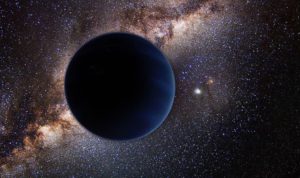
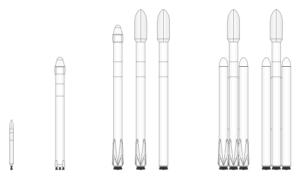
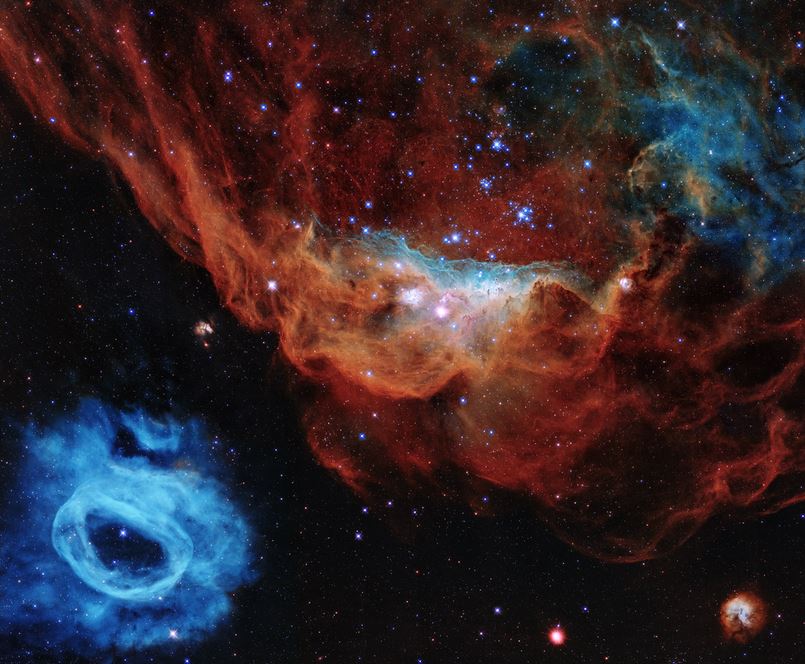
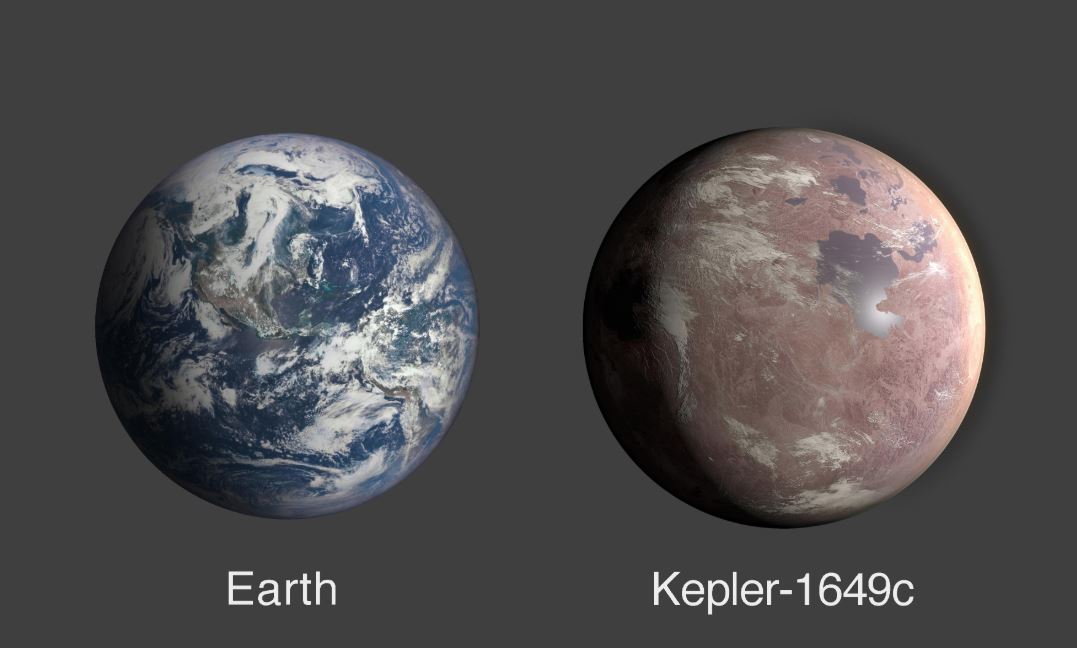
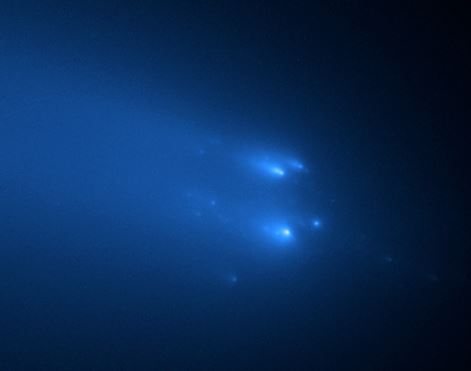
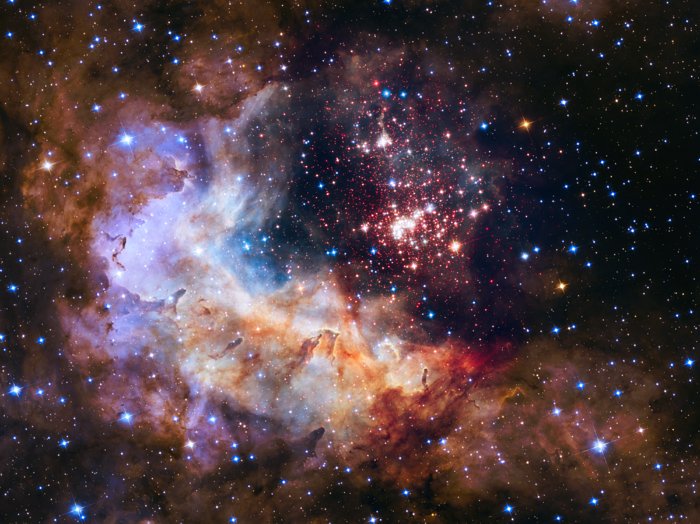
Recent Comments